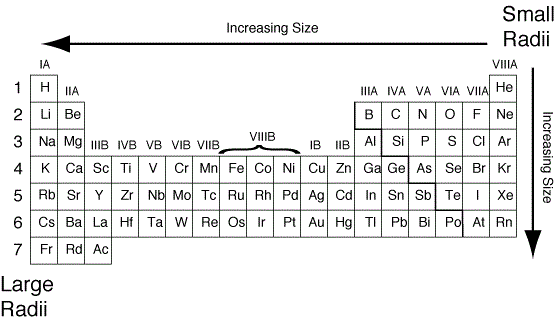

The values are again for 6-co-ordination, although I can't guarantee that for the phosphide figure.įirst of all, notice the big jump in ionic radius as soon as you get into the negative ions. The values for the oxide and chloride ions agree in the different source, so it is probably OK.

The phosphide ion radius is in brackets because it comes from a different data source, and I am not sure whether it is safe to compare it. The table misses out silicon which does not form a simple ion. Let's look at the radii of the simple ions formed by elements as you go across Period 3 of the Periodic Table - the elements from Na to Cl. The size of the atom is controlled by the 3-level bonding electrons being pulled closer to the nucleus by increasing numbers of protons - in each case, screened by the 1- and 2-level electrons. In the period from sodium to chlorine, the same thing happens. The amount of screening is constant for all of these elements. The increasing number of protons in the nucleus as you go across the period pulls the electrons in more tightly. (Look back to the left-hand side of the first diagram on this page if you aren't sure, and picture the bonding electrons as being half way between the two nuclei.)įrom lithium to fluorine, those electrons are all in the 2-level, being screened by the 1s 2 electrons. If you think about it, the metallic or covalent radius is going to be a measure of the distance from the nucleus to the electrons which make up the bond. Leaving the noble gases out, atoms get smaller as you go across a period.

You aren't comparing like with like if you include the noble gases. All the other atoms are being measured where their atomic radius is being lessened by strong attractions. Because neon and argon don't form bonds, you can only measure their van der Waals radius - a case where the atom is pretty well "unsquashed". You have to ignore the noble gas at the end of each period.


 0 kommentar(er)
0 kommentar(er)
